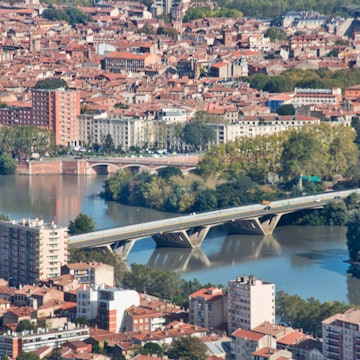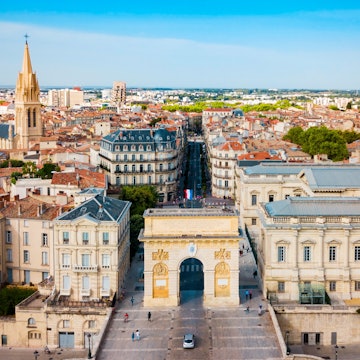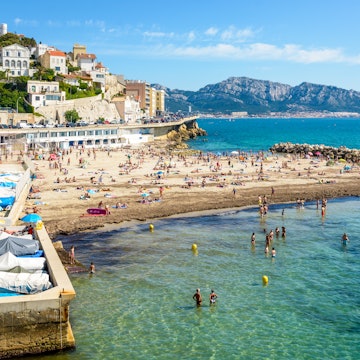
This running route through Aix and Arles puts you in the paintings of Cézanne and Van Gogh
Jan 31, 2020 • 7 min read
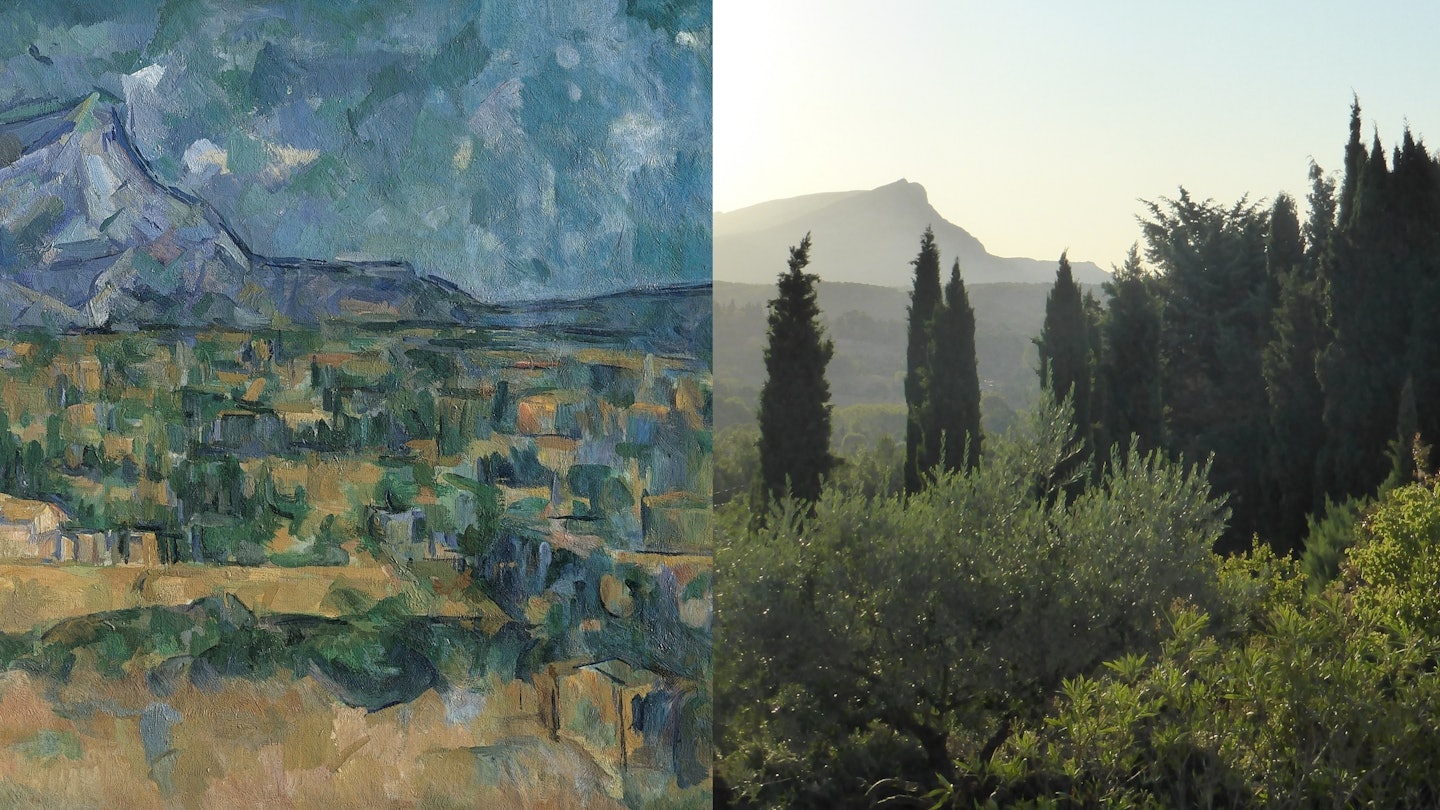
One of Paul Cézanne's paintings of Mont Sainte Victoire; Alecsa's view from Aix-en-Provence © Paul Cézanne; © Doug Stewart / Lonely Planet
From taking a handful of courses in art history at university, to recently spending my free time exploring new trail running races around Europe, art and running have always been my great interests. And what better way to combine them than running in the footsteps of two of my favourite artists, Paul Cézanne and Vincent van Gogh, on a quick autumn weekend trip to Provence.

Chasing Cézanne in Aix-en-Provence
On a sunny Friday afternoon, Cézanne’s native town of Aix-en-Provence exudes elegance, beauty… and tranquillity. As I arrive, locals sip coffees at terraced cafés down the Cours Mirabeau (the “southern Champs-Elysées”), while chic ladies stroll around the shops in the Old Town.
Early the next morning, I cut a very different figure lacing up my trainers to explore the city before the 30°C heat sets in. Going for a run to see the sights will also allow me to follow Cézanne’s life and culminate in running towards the view of his favourite landscape – the Mont Sainte Victoire. A mountain that soars out of the lavender covered lowlands – the rich purple hues merging with the tree lined lower slopes, greens and purples crashing together like on Cézanne’s palette as he painted the mountain from his atelier north of town.

My run starts from the statue of Paul Cézanne, adjacent to the Fontaine de la Rotonde that spouts water into the crisp morning air. Cézanne surveys the town like a benevolent patriarch – his gaze pointing the way for my run. Making my way up the main street past fountains dating back to Roman times, I arrive at the legendary Café des Deux Garçons where he mingled with the artists and writers of the time. I make a note to return for a glass of rosé later, a local favourite. Next door I see the old faded sign of the artist’s father’s hat shop above a bank, a small token of his life here.
It’s quiet now but the scene will be buzzing shortly. Turning through narrow maze-like streets I am suddenly overwhelmed by the colours, sounds and perfumes emanating from the market stalls being set up in Place Richelme. Luckily, finding my way is easy as I follow the gold buckles inscribed with Cézanne’s name on the pavement. These are designed to keep tourists on track, visiting the highlights of Aix-en-Provence’s connection with the painter. They take me to Cathédrale St-Sauveur, where his funeral was held and where Romanesque, Baroque and Gothic elements combine. The sun is beginning to waken the sleeping town, its warmth welcome, as I make my way up the hill to reach the entrance to Cézanne’s studio, where I shall return during opening hours for an in-depth visit.

Climbing to the Terrain des Peintres
Paul Cézanne lived and worked high on the hill above the Old Town, surrounded by ever-changing views of unspoilt nature and plenty of light. But this is not the main destination for today’s run – I climb higher and finally reach the pinnacle, the Terrain des Peintres (Painters’ Grounds).
This small park draws art lovers like bees to a pot of honey, providing views across to “Cézanne’s Mountain”– Mont Sainte Victoire. As I admire it from up among the peaceful shady trees, I channel Cézanne himself, marvelling at the majestic 1011m-high mountain rising above Provence. I’m a little out of breath from running here in lightweight gear, so can only imagine the struggle to carry an easel, paint and brushes! Cézanne would do this every morning, and I am now surrounded by plaques showing me the many representations of Mont Sainte Victoire he left behind.
My run done, I head to my hotel to shower and shelter from the day’s heat in the Musée Granet where the great painter took drawing classes and where 11 of his paintings are exhibited. Then it’s off for the planned glass of rosé, but I head to bed early before the next morning’s journey.
To extend your run further, the Aix Tourist Office offers a number of maps and directions to reach the trail heads for Mont Sainte Victoire and to climb to the summit.

Running with Van Gogh in Arles
While Cézanne lived and worked in his native Provence for much of his life, Vincent van Gogh came here from his native Netherlands, to discover the southern French natural beauty and light.
He settled in Arles, where he was inspired to create some of the most vibrant paintings in modern times. It was also the most restless time in his life, when he cut off his ear and admitted himself in an asylum.
After a short journey to Arles, I am greeted by an ancient metropolis of Roman Gaul and home to Vincent’s most prolific creative period. I’m lucky enough that I can run “into” several of his paintings here, thanks to informative plaques placed where he would have stood when he immortalised the views.

My run will follow the “Vincent” tiles on the pavement from outside the Tourist Office. I stop first at the hospital where he was interned several times and whose beautiful interior courtyard he painted. It’s a relaxing place, where you can search for, and find, serenity. But I don’t linger too long as I am keen to get into the “real” Van Gogh: the strong colours, the bold visions, the extraordinary imagination.
It’s less than half a mile and I’m there: on the Terrasse du café de le soir in the Place du Forum (now Café Van Gogh), just as it was painted by Van Gogh in 1888 in Cafe Terracé at Night. The owners have embraced their connection to the famous painting and made sure to maintain the vibrant yellow walls.
Down to the Rhône
From here it’s down by the Rhône River’s banks and I pass a few plaques commemorating a sequence of pictures of the Pont de Trinquetaille, which Vincent immortalised. The riverbanks are as Van Gogh painted them, saying that “the stones, the asphalt, the pavement are grey, the sky pale blue.”
Unfortunately, I won’t get to see the Rhône under the Van Gogh emblematic starry skies of Starry Night over the Rhône. But I can enjoy the sunshine while I make my way to the square where his home once stood. It was destroyed by war-time bombing in 1944, but a plaque shows what the area looked like to Van Gogh in this painting The Yellow House. Most of it is still there: the railroad bridge, the street corner, even the buildings behind it.

A visit to Arles is not complete without the impressive Roman Arena, which can still be enjoyed as a working theatre. Van Gogh painted its busy atmosphere, with crowds mingling in shadows and light. Finally, I stop off at the peaceful Alyscamps Graveyard whose tree-lined alleys next to the Craponne Canal were painted by both Van Gogh and Paul Gauguin. The rhythmic sequence of tree trunks against a backdrop of yellow and orange paths is unchanged, and a fitting place to end my two runs, sheltered from the sun by the plane trees.
To extend your Van Gogh pilgrimage further, 25km from Arles is the historic Roman site of Glanum but also Saint-Rémy-de-Provence, where a faithful reconstitution of the room that the painter occupied when he was interned in the hospice at Saint-Paul-de-Mausole is available to visit. This is actually where he painted the famous The Starry Night. You will pass through fields of sunflowers which also famously provided inspiration for Van Gogh.
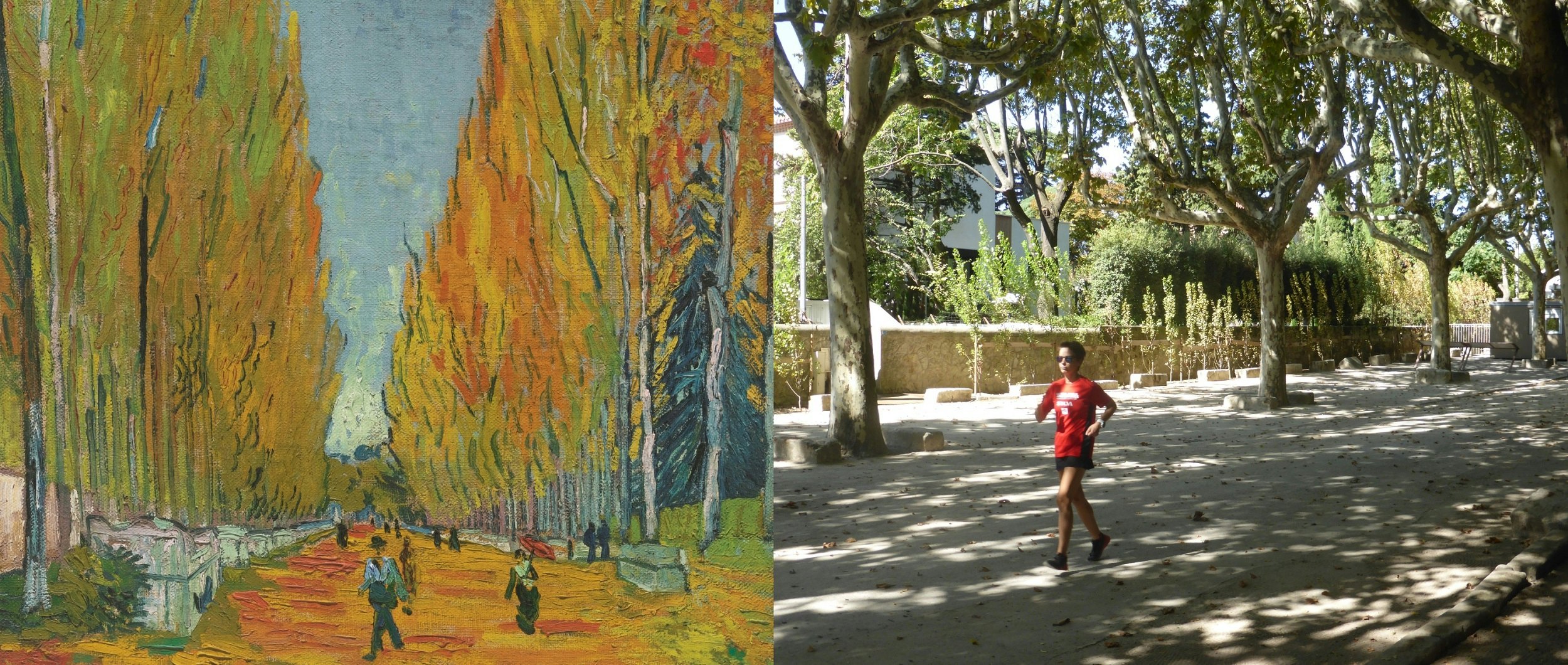
Sightrunning to stand still
Running to the spots where these paintings were created is like running back in time, and gets me closer to my favourite artists. I relate to Cézanne’s peaceful world in Aix, but also to Van Gogh’s tumultuous years in Arles. My final glass of rosé raised to their memory back at the Café de la Nuit, I reflect on their legacy and resolve to run up Mont Sainte Victoire one day!
Make it happen
To reach Aix-en-Provence, take the Eurostar to Paris or Lille and switch to a TGV (easier done at Lille where you just change platforms; in Paris, you need to take the RER train from Gare du Nord to Gare de Lyon for your connection). From here, you can also hop onto the TGV to Arles via Marseille and step into Vincent van Gogh’s world with a tour of his inspiration spots during his most prolific period.
To get to Arles, take the Eurostar to Lille and change to the TGV to Aix-en-Provence for a first incursion into the world of art in Cezanne’s footsteps. From there, a TGV ride via Marseille brings you to Van Gogh’s town. Or fly from Stansted to Marseille airport and hop on the train from there.
You might also like:
- Beyond the brushstrokes: the art of living in Provence
- First-time France: where to go and what to do
- 10 best marathons to run in 2020








